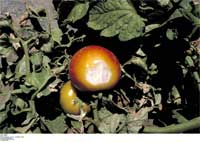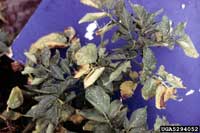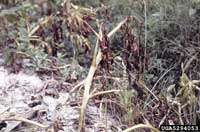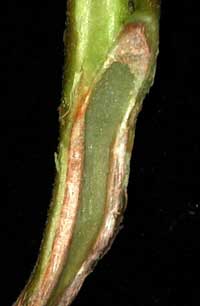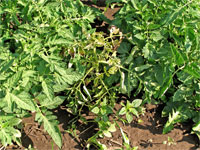Extension > Garden > Diagnose a problem > What's wrong with my plant? > Vegetable > Tomato > Discolored leaves
Tomato > Leaves > Discolored leaves
1 of 4
Sunscald
Abiotic
- Affects fruit, young leaves and stems
- Occurs only on tissue exposed to the sun
- Fruit turns tan or white on exposed side, may dry out and appear wrinkled
- Young leaves of transplants turn grey with irregular bands on the lower side
- Young stems of transplants turn white on exposed side only
- More information on Sunscald
2 of 4
Verticillium Wilt
Verticillium albo-atrum, Verticillium dahlia
- A yellow wedge shaped lesion on leaf often with a brown center
- Leaves yellow and wilt, often one side only
- Lower leaves wilt first, eventually whole plant wilts
- In a lengthwise cut of the stem near the soil line, veins are tan, center is green
- Common in cool temperatures 68° to 75° F
- More information on Verticillium Wilt
3 of 4
Virus
Cucumber mosaic virus, tomato mosaic virus, tomato
spotted wilt virus and more
- Leaves are mottled with yellow and light green patches
- Leaves are misshapen; unusually long and thin like a shoestring or curled and deformed
- Fruit have yellow blotches or brown rings
- Plants are stunted even when neighboring plants look healthy and tall
- More information on Virus
4 of 4
Cold injury
- Leaves look water-soaked and soft, then turn black
- Fruit becomes soft water-soaked and rots
- Leaves show injury immediately, fruit may not show symptoms for 5 to 7 days
- Occurs at temperatures below 50° F



